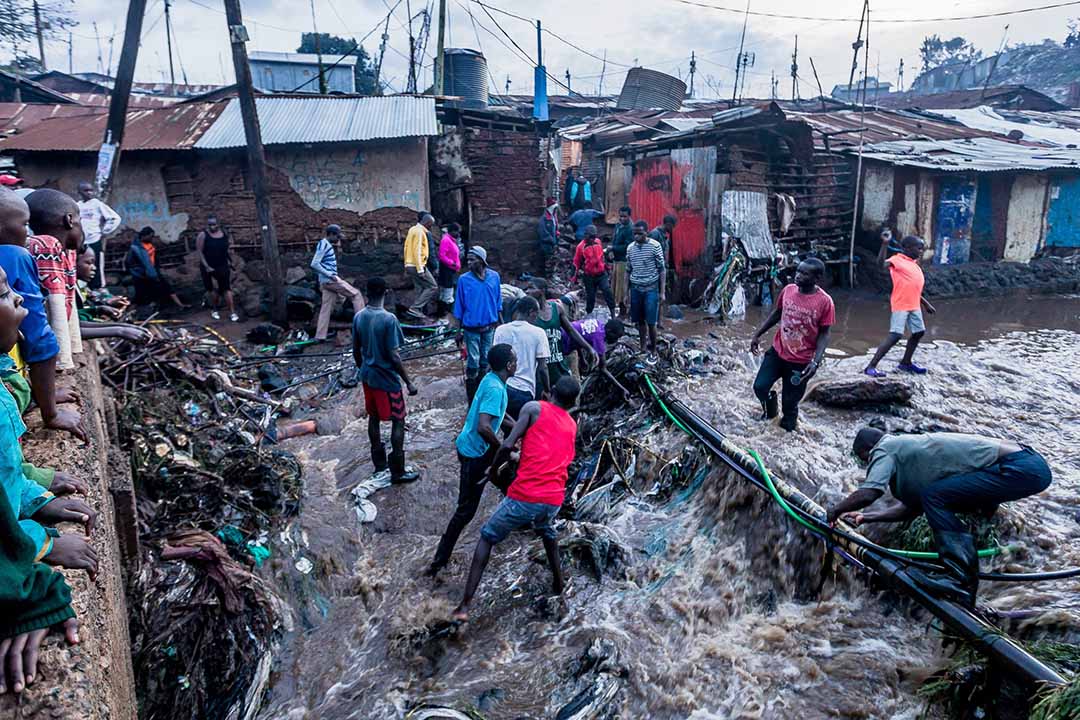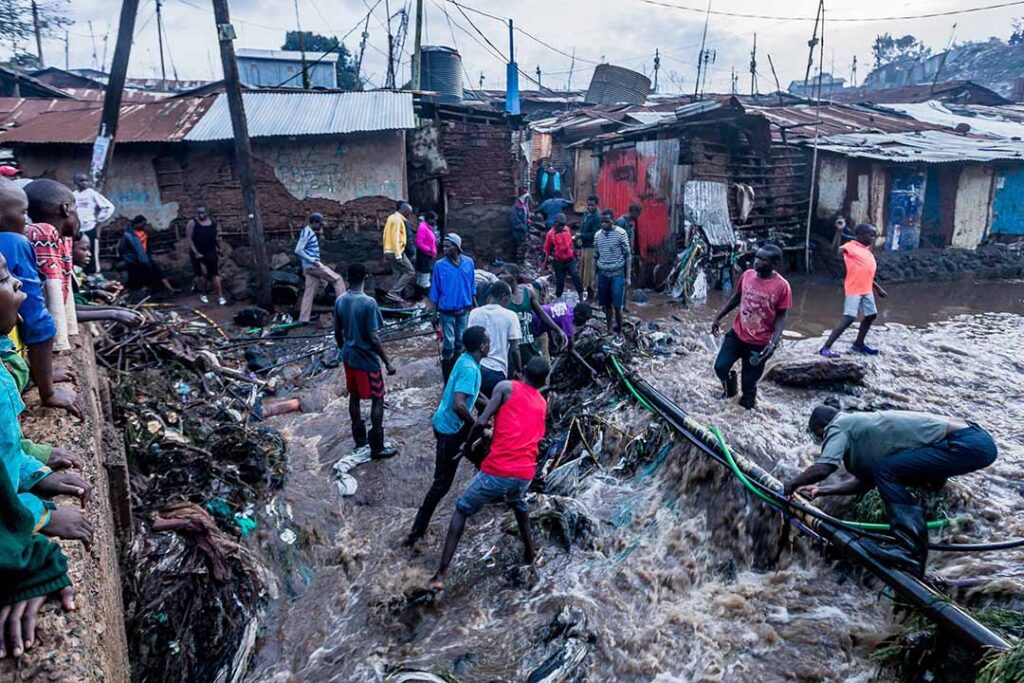Data dive: SDG 1
Poverty eradication requires integrated strategies that address a complex range of variables

By Sixolile Ngqwala
African countries are in the process of implementing the Sustainable Development Goals (SDGs) agenda of 2030, a UN-driven development framework that is expected to be implemented by all UN member states. The SDGs focus on three aspects of sustainable development, namely, economic, social and environmental. The first SDG sets the goal of completely eradicating poverty. As one would expect, this is a challenge for many countries, especially those in Africa. This analysis reviews the available figures on SDG 1 (ending poverty in all its forms everywhere) and the progress African countries are making in achieving this goal. Monitoring progress being made with SDG 1 depends on a crucial indicator: the proportion of population living below the international poverty line, or less than $1.25 a day. The available data at country level presents a complex picture, with gaps that are considerable in quality, timeliness and level of disaggregation.
This analysis uses the latest available data, but countries for which there is a lack of data are excluded and are not the part of the analysis. For better data visualisation and analysis, the continent has been disaggregated into five regions (middle Africa, North Africa, southern Africa, East Africa and West Africa).
Middle Africa
In Angola, the number of people living below the international poverty line decreased from 32.3% to 30.1% from 2000 to 2008. In Cameroon, between 2001 to 2007, that indicator increased from 23% to 29%, with a significant decrease to 23,8% in 2014. In 2003, in the Central African Republic (CAR) 64.8% lived below the poverty line, while 66.3% did so in 2008, a moderate increase in the number of people living in poverty. Gabon has done a good job in eradicating poverty, with a decrease from 8% in 2005 to 3.4% in 2017. A ignificant decrease was also observed in Chad, from 62,9% in 2003 to 38,4% in 2011. The Democratic Republic of Congo (DRC) has the highest rate of people living below the international poverty line in middle Africa, but achieved a significant decrease from 94% in 2004 to 77% in 2012. São Tomé and Príncipe is apparently struggling on this indicator, with an increase within a decade from 30% in 2000 to 32,3% 2010.
Eastern Africa
In the eastern part of the continent, Seychelles had the lowest rate of people living below the international poverty line, at 1,1% in 2013, though no figures are currently available to show a trend. Tanzania initially had the highest rate of people living below the international poverty line at 86% in 2000. However, the country saw a significant decrease in the proportion of people living in poverty, to 59,9% in 2007 and then to 49,1% in 2011. Ethiopia saw a decrease of 10% from 36% in 2004 to 26% in 2015. Kenya saw a decrease of 7% between 2005 and 2015. Malawi, by contrast, saw little progress with poverty eradication, with a small decline from 73% in 2004 to 71% 2010. It should be observed that the pace of poverty reduction in each country differs, among other things because countries use different resources and also different monitoring mechanisms. Comoros saw a significant increase in poverty, from 13,5% in 2004 to 18,1% in 2013. In Djibouti, in 2002, the poverty rate was 20,6%, while it was 79,3% for Mozambique, 64% for Uganda and 49% for Zambia.
Djibouti, however, has seen fluctuations in its poverty level, with a decrease to 18% between 2012 and 2013 and a five percentage point increase in 2013 to 23%. In Mozambique, in 2008 poverty was 68,7% and 62,9% in 2014, indicating a significant decline since 2002. In Uganda, positive results were achieved in 2005, 2009 and 2012, with the poverty level at 55%, 43% and 36% respectively; however there was a six percentage point increase in the poverty rate in 2016 at 42%. Zambia, by contrast, has seen consecutive increases in poverty levels: in 2004 they were at 57%, in 2006 at 61%, and in 2010 at 64%, although a considerable decrease to 58% was observed in 2015. No time series data were available for Zimbabwe and South Sudan. In 2011, Zimbabwe’s poverty level was 21%, while South Sudan’s was 43% in 2009.
North Africa
In the northern part of the African continent, substantial progress has been made towards reducing poverty. In 2011, Algeria had the lowest poverty rate of 0,5% in North Africa, and indeed in Africa as a whole. In 2000, the poverty rate in Morocco was 6,3%, while in Tunisia it was 5,3%. Between 2006 and 2013 Morocco saw an impressive reduction in poverty, from 3,1% in 2006 to 1% in 2013. A year earlier, between 2005 and 2006, Tunisia saw a 2,2 percentage point decrease from 5,3% to 3,1%, while in 2010 a further decrease was observed, from 3,1% to 2%. Egypt saw a significant decrease between 2004 and 2015: from 4,4% in 2004 to 3,9% in 2008, 2,3% in 2012 and to 1,3% in 2015. Sudan had the highest poverty rate when compared to other North African countries, at 15% in 2009. However, at the time of writing no time-series figures were available from which trends could be observed.
Southern Africa
The southern African countries appear to have made progress fighting poverty, with most demonstrating a consistent decrease in poverty rate levels over the past several decades, but the pace of poverty reduction differs in every country, depending on the resources used to fight poverty. In Botswana, the proportion of people living below the international poverty line decreased from 29,8% to 18,2% between 2002 and 2009. In Eswatini, the poverty rate decreased by 6,4% from 48,4% in 2000 to 42% in 2009. Lesotho had one of the highest rates of poverty in southern Africa, with a small decline from 61% in 2002 to 59% in 2010. Namibia has seen good results, reducing poverty from 31,5% in 2003 to 22,6% in 2009 and then to 13,4% in 2015. In South Africa, some 32,6% of the population lived below the international poverty line in 2000, with significant improvement in 2005 at 25%, in 2008 at 16,9% and again in 2010 at 16,5%. However, in 2014 an increase in the poverty level to 18,9% was observed.
West Africa
In West Africa, Niger had the highest rate of people living below the international poverty line at 75% in 2005, but this declined to 72% in 2007 and to 45% in 2014. In 2003, Benin’s poverty rate was 49%, though it saw an increase of four percentage points from 49% to 53% in 2011, and a decrease of three percentage points to 50% in 2015. Gambia saw good improvement over the years: in 2003 the poverty rate was 45%, while it was 25% in 2010, a considerable decrease followed by another to 10% in 2015. In Ghana, the poverty rate decreased from 25% in 2005 to 12% in 2012. In 2002, some 62% of the population was living below the international poverty line in Guinea, but between 2007 and 2012 there was a big drop in the poverty rate from 35% to 60%. Guinea-Bissau saw an increase of 13% in poverty between 2002 and 2010, from 54% to 67%. Liberia’s poverty rate declined by 30 percentage points between 2007 and 2014, from 69% to 39%. Congo saw a decrease in poverty between 2005 at 52% and 2011 at 37%.
In Nigeria, a constant rate of 53% was observed, with no changes between 2003 and 2009. Mauritania saw consecutive decreases in poverty, from 14% in 2004 to 11% in 2008 and 6% in 2014 – the lowest among West African countries. In Côte d’Ivoire, poverty increased by six percentage points from 23% in 2002 to 29% in 2008, but decreased from 29% in 2008 to 28% in 2015. The poverty rate in Togo was 56% in 2011, but this had declined to 49% by 2015. Senegal had a poverty rate of 49% in 2001, but saw a reduction to 38% in 2005; poverty held constant between 2005 and 2011 at 38%. In Sierra Leone, the rate of people living in poverty was 61% in 2003 but had decreased to 52% by 2011. In Burkina Faso, the poverty rate in 2003 was 57%, but the country saw a significant decrease from 55% in 2009 to 44% in 2014. Poverty eradication requires integrated strategies that address a complex range of variables, including economic growth, job creation, and education.
Historically, poverty rates in Africa have been high but on the whole these are diminishing, albeit at markedly different rates. However, large differences between the five African regions were observed. Over the past couple of decades, North African countries have performed best in reducing poverty. We noted gaps in the availability of data, and it is obvious that tracking SDG progress requires more and better quality data. This will give planning a base in evidence, which is likely to enhance the ability of African countries to achieve SDG objectives and ensure that “no one is left behind”.


